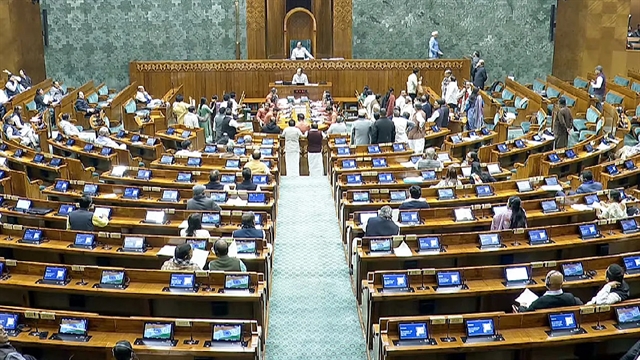 Economy
Economy

Transactions on the property market in the districts of Đông Anh, Gia Lâm, Hoài Đức and Thanh Trì posted an uptrend in the first quarter of this year though Hà Nội saw an overall reduction on the market, according to Savills Việt Nam in the capital.

|
| A view of Hà Nội. Transactions on the property market in four districts of Đông Anh, Gia Lâm, Hoài Đức and Thanh Trì had uptrend in the first quarter of this year. — Photo vneconomy.vn |
HÀ NỘI — Transactions on the property market in the districts of Đông Anh, Gia Lâm, Hoài Đức and Thanh Trì posted an uptrend in the first quarter of this year though Hà Nội saw an overall reduction on the market, according to Savills Việt Nam in the capital.
This uptrend was attributed to news that the four districts will be upgraded from suburban to urban regions,
Đỗ Thị Thu Hằng, associate director of advisory services Hanoi for Savills Việt Nam, announced the news at press conference in the capital on April 3.
The move was likely to spark more infrastructure development in those districts to promote growth.
Hoài Đức and Gia Lâm already had good infrastructure development with many urban areas under construction that would attract investors, Hằng said.
Gia Lâm District recorded the best growth thanks to large projects, available infrastructure and convenient transport, she said.
Property fever in Hoài Đức had died down, and despite investor interest, Thanh Trì still stood behind Gia Lâm.
Thanh Trì mainly supplied products for end-users so this market would not bring many profits to investors, she said.
Hà Nội in Q1
At the conference, Savills also reported Hà Nội saw a temporary reduction in supply and demand on the property market in the first quarter of this year.
In the first quarter, there were 9,700 units added, down 36 per cent quarter on quarter (QoQ) but up 76 per cent year on year (YoY). Due to business disruptions during Lunar New Year, launches decreased across all grades.
Grade A dropped 84 per cent QoQ whilst Grade B and C decreased 35 per cent QoQ. There were approximately 9,800 sales, strongly increasing 70 per cent YoY. In a QoQ comparison, sales decreased by 14 per cent due to the long Tết holiday.
Grade B remained the largest primary supplier at 22,500 units, representing a 65 per cent share. Hà Nội's apartment market was underwritten by strong occupier demand, whilst the high-end segment was only appealing to a small proportion of local high-net-worth individuals (HNWIs) and international purchasers.
Strong end-user and investor demand resulted in high Grade B sales, accounting for 70 per cent, and the highest growth of 99 per cent YoY among the three grades.
Developers offered competitive prices, with the average Grade B approximately US$1,390 per sq.m, down 2 per cent QoQ but up 8 per cent YoY.
Affordability in Việt Nam's housing market has consistently improved over the last three years. The price-to-income ratio decreased from 34 in 2016 to 21 in 2018 due to Việt Nam’s booming HNWIs and middle class. Hà Nội’s price-to-income stood at 17, better than Việt Nam’s overall position. Sales have increased since 2014, growing 28 per cent per annum.
“The shortage of commercial assets has left the residential sector the most realistic option for investors,” said Dương Đức Hiển, director, residential sales at Savills Việt Nam’s Hà Nội branch.
Approximately 44,000 units from 34 existing and future projects would enter the market. As Hà Nội’s five planned satellite towns were facing challenges with investment capital, population distribution and accommodation for workers, key players such as Vingroup and BRG were implementing large projects in Gia Lâm and Đông Anh - VinCity Ocean Park (420 ha) and BRG Smart City (272 ha).
These developments were a sustainable solution for easing population pressure, traffic congestion and infrastructure shortages, Hằng said. — VNS

.jpg)


